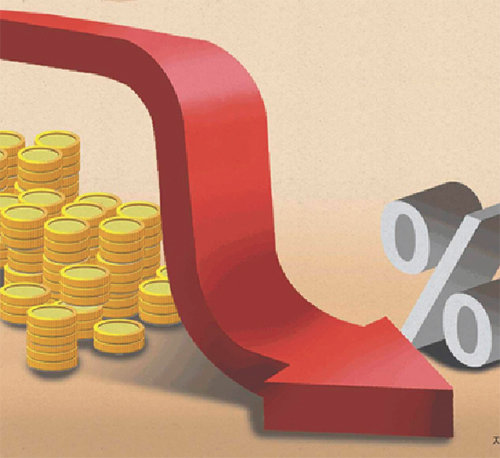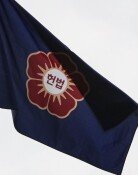U.S. lowers interest rates by 0.25pc again in two months
U.S. lowers interest rates by 0.25pc again in two months
Posted September. 20, 2019 08:19,
Updated September. 20, 2019 08:38

The U.S. Federal Reserve (Fed) cut policy interest rates by 0.25 percentage point on Wednesday (local time), only two months after its previous interest rates decrease in July. Accordingly, the Bank of Korea is also likely to further decrease interest rates in October as well.
The Fed decreased its policy interest rates from 2.00∼2.25 percent to 1.75∼2.00 percent, following a regular meeting of the Federal Open Market Committee. Federal Reserve Chairman Jerome Powell explained that the decision has been made “in light of the implications of global developments for the economic outlook as well as muted inflation pressures” during a press conference after the meeting, emphasizing that this is an “insurance-like” measure against uncertainties in the U.S. economy and potential downward risk.
The Fed has not put forward clear signs for additional interest rates cut, but they have left the possibility open. “(The committee) will act as appropriate to sustain the expansion,” and “If the economy weakens more, we’re prepared to be aggressive,” said the chair. However, U.S. President Donald Trump said the Fed’s interest cut wasn’t enough, harshly criticizing the chair via his Twitter account saying, “Jay Powell and the Federal Reserve Fail Again. No guts, no sense, no vision! A terrible communicator!”
With the new reduction of interest rates by the Fed, the gap between South Korean and U.S. base rates went down from 0.75 percentage point to 0.50 percentage point. This indicates a higher possibility of the Bank of Korea further lowering interest rates as concerns over capital outflows subside.
“The result was in line with our prediction,” said Bank of Korea Governor Lee Ju-yeol on the Fed’s recent decision during his commute on Thursday. “It has reduced other countries’ burden with monetary policies.” On the possibility of further interest reductions by the Fed, he said, “As the Fed mentioned that it will act as appropriate to sustain the expansion, it seems to be open to potential reductions in the future.”
The South Korean market seems to presume that the Bank of Korea’s interest rate cut in October has been practically determined. Expansionary monetary policy is unavoidable as inflation already fell below zero and domestic companies’ lackluster performance has persisted due to various unfavorable conditions home and abroad. Some even predict that under-one-percent interest rate may be introduced for the long term if the domestic economy continues to struggle. The current base rate of the country is set at 1.50 percent, which means with one reduction it will reach 1.25 percent, the historical low.
However, there are others predicting that the Bank of Korea will consider further interest reaction with prudence as low-interest rates can bring a host of negative effects. Other factors that may hinder the Bank of Korea’s decision include growing concerns over financial inequality, such as expanding household loans and increase real estate prices, mainly in Seoul.
zion37@donga.com · parky@donga.com
Headline News
- Med professors announce intention to leave hospitals starting Thursday
- Bridge honoring Sgt. Moon Jae-sik unveiled in Pennsylvania
- Chief of Staff Chung tells presidential secretaries to stay away from politics
- US FTC bans noncompete agreements
- N. Korea launches cyberattacks on S. Korea's defense companies







